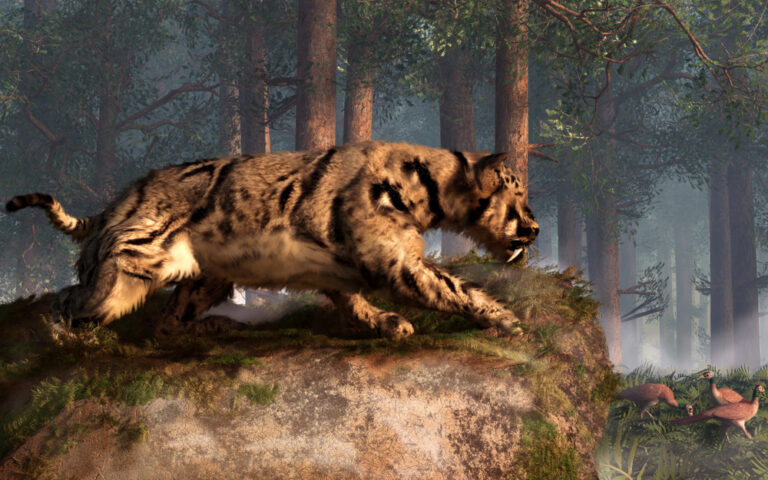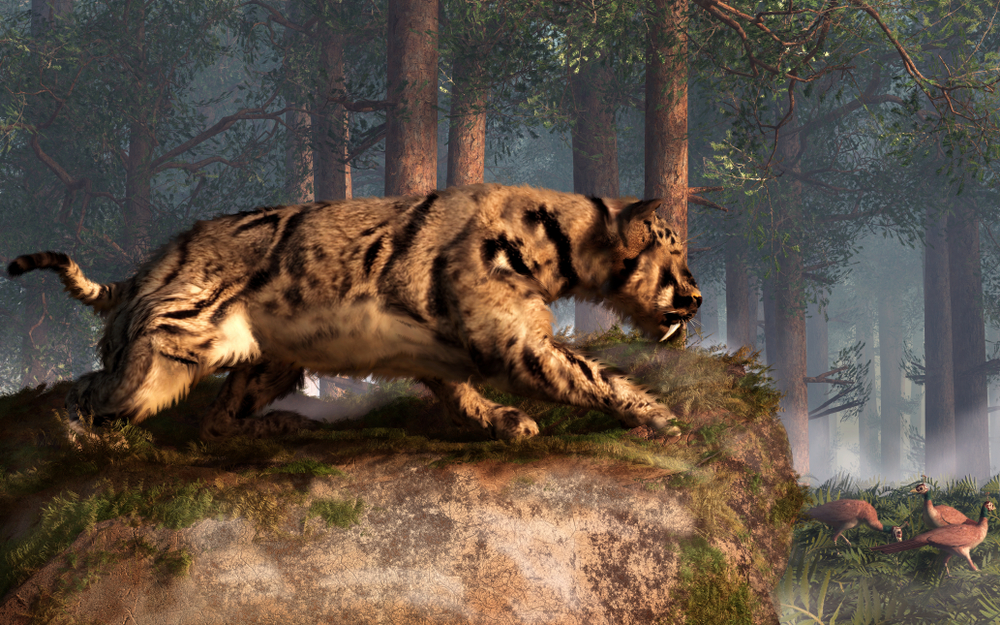
[ad_1]

Sabretooth cats, known for their elongated and sharp teeth resembling a canine, were found across the planet from the Eocene to the Pleistocene Epoch, between 56 million years to 11,700 years ago. And now, paleontologists discovered two new species of sabretooth cat after re-analyzing a collection of fossils in Langebaanweg, South Africa.
The collection is the largest global assortment of Pliocene fossils containing various late Cainozoic fossil vertebrates and invertebrates. They are housed at the Iziko Museums of South Africa. The study published in iScience, found that the distribution of sabretooth cats in ancient Africa may be different than previously thought.
“The known material of sabretooth’s from Langebaanweg was relatively poor, and the importance of these sabretoothed cats has not been properly recognized,” said study author and paleontologist at Complutense University, Alberto Valenciano, in a statement. “Our phylogenetic analysis is the first one to take Langebaanweg species into consideration.”
Analyzing Ancient Sabretooth Cat Bones
Among the group of fossils, researchers observed four sabretooth cat specimens. Two of the fossils appeared to be unknown to the fossil record. Dubbed Dinofelis werdelini and Lokotunjailurus chimsamyae, both fossils suggest that sabretooth cats were found across Africa 5 million to 7 million years ago. Fossils in the Dinofelis genus are widespread worldwide and found in China, Africa, Europe, Africa and North America. Before the study, Lokotunjailurus specimens have only been found in Kenya and Chad.
An array of sabertooth teeth from Dinofelis, Lokotunjailurus, and Adeilosmilus (Credit: iScience Jiangzuo et al.)
After analyzing the ancient bones, the team created a family tree that mapped out the physical trails of each sabretooth species, like the presence or absence of teeth and the shape of the skull and jaw. Using the map, scientists determined how closely each sabretooth cat related to its evolutionary cousins.
Sabretooth Cats Found Across the World
Aside from identifying two new species of sabretooth cats, the Langebaanweg specimens revealed that 5.2 million years ago, present-day South Africa was covered in lush grassland environments and forests.
The team determined this by looking at the other specimens in the Langebaanweg collection under the subfamilies, Machairodontini, Metailurini and Feline. Machairodontini cats were larger and more adapted to running at quick speeds. Because the team found a presence of Machairodontini bones in the area, they determined that their environment consisted of open grasslands.
Metailurini cats were known as false sabretooth because its teeth were a cross between long, flat, blade-like teeth and cone-shaped teeth found in modern-day cats. Their shape of canine teeth was also shorter than true sabre teeth and they were found in forested areas.
(Credit:iScience Jiangzuo et al.)
Both types of sabretooth fossils were found in Langebaanweg with a higher amount of Machairodontini fossils, compared to those found in Africa and Eurasia. This finding suggests that South Africa was in a state of geographical transition to open grasslands in this time period.
Further examination revealed that the sabretooth species found in Yuanmou, China, closely resemble those found in Langebaanweg, South Africa. “This suggests that the ancient environment of the two regions was similar or that there was a potential migration route between the Langebaanweg and Yuanmou,” said Qigao Jiangzuo, a paleontologist at Peking University and study author in a statement.
The last sabretooth cats went extinct in the late Pliocene period in Europe but continued roaming the planet in North and South America until the end of the Pleistocene epoch. Because of this study, researchers are starting to understand how sabretooths evolved in the southern hemisphere during the late Miocene period to the early Pliocene.
Read more: Everything You Need to Know About the Saber Tooth Tiger Extinction
[ad_2]